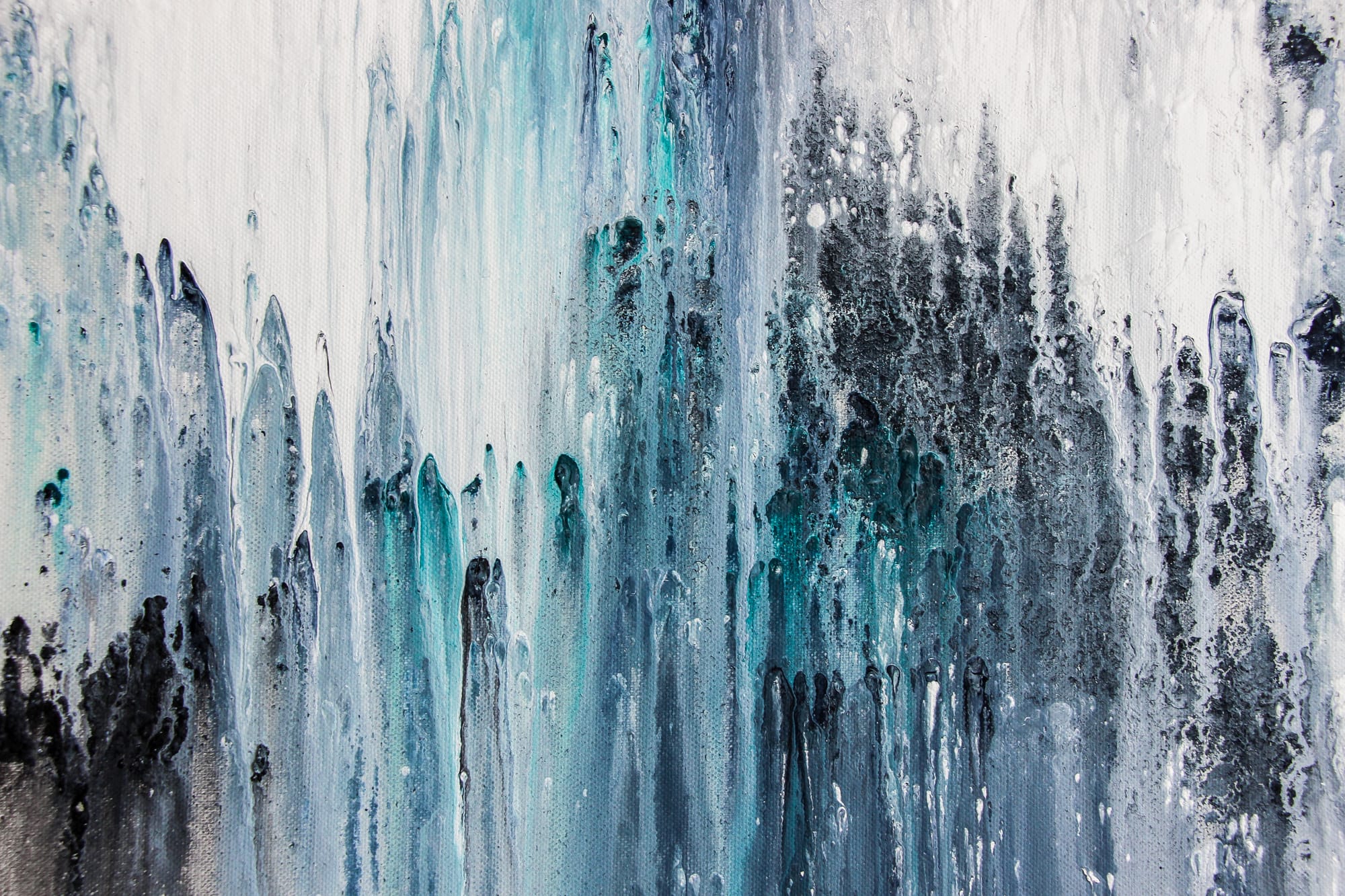Can You Paint in the Rain with the Right Tools?

Key Features
- Choosing Rain-Resistant Paints: Recommends the best types of paint for damp conditions, emphasizing latex, acrylic, and elastomeric paints for their quick-drying, water-resistant qualities.
- Surface Preparation Techniques: Details on cleaning, priming, and checking moisture levels before painting in rainy weather for lasting results.
- Essential Tools for Rainy Conditions: Highlights tools such as airless sprayers, synthetic brushes, and temporary shelters to achieve a smooth finish despite the weather.
Painting in the Rain.. Is it a Good Idea?
Painting in the rain isn’t usually recommended, but sometimes, you just don’t have the luxury of waiting for dry, sunny weather. With the right tools, techniques, and materials, you can still achieve a successful paint job—even when the forecast isn’t cooperating. Here, I’ll cover key considerations for painting in damp or rainy conditions, including tips on paint selection, surface preparation, and equipment to make it happen.
Is It Possible to Paint in the Rain?
Yes, it’s possible to paint in the rain, but it comes with challenges. Rain impacts how well paint adheres to surfaces and how quickly it dries. However, with high-quality, water-resistant products and careful preparation, painting in wet weather can be manageable.
What Type of Paint Is Best for Rainy Conditions?
When it comes to painting in wet conditions, your choice of paint is crucial. Latex and acrylic paints tend to perform better than oil-based paints in rainy conditions because they’re water-based, meaning they dry faster and have better adhesion on slightly damp surfaces.
Key Features to Look for:
- Quick-drying formula: Paints that dry faster reduce the risk of moisture interference.
- Water-resistant properties: Check for paints labeled as suitable for exterior use and resistant to rain or moisture.
- Elastomeric paint for exterior surfaces: This type of paint is ideal for outdoor applications because it provides a flexible, weather-resistant seal, expanding and contracting with temperature changes to prevent cracks.
Things to Know
- Rain-resistant paints like acrylic are ideal.
- Always clean and prime your surface.
- Sheltering your work area can make all the difference.
How Should You Prepare the Surface for Painting in the Rain?
Surface preparation is even more critical when painting in damp conditions. Here’s how to prepare the area to ensure maximum adhesion and durability:
1. Clean the Surface
- Use a power washer or a sturdy brush to remove dirt, mildew, or debris from the surface. Let the area dry as much as possible before painting.
2. Check for Moisture
- Moisture meter: Investing in a moisture meter helps you determine whether the surface is too wet to paint. Aim for a reading below 15% moisture content.
3. Avoid Puddling
- Wipe away any standing water on the surface. Even if it’s raining lightly, you want to avoid visible water before applying paint.
4. Apply a Primer
- Use a quick-dry primer specifically designed for exterior use. A primer will create a strong foundation and improve the paint’s adhesion to the surface.
What Tools Are Best for Painting in Rainy Conditions?
The right tools can make a world of difference when painting in challenging weather. Here’s a list of essentials that can help you achieve a quality finish:
| Tool | Purpose |
|---|---|
| Synthetic-bristle brushes | Holds up better against moisture and humidity than natural bristles |
| High-quality rollers | Ensures even application and can handle thicker, weather-resistant paints |
| Airless paint sprayer | Ideal for applying a quick, even coat, reducing drying time |
| Drop cloths & covers | Protect surfaces from unexpected splashes or light rain |
How to Apply Paint Effectively in the Rain
Painting in damp conditions requires adjusting your application methods to help the paint cure faster and adhere better. Here’s a step-by-step approach:
Step 1: Use Thin Coats
Applying thin layers allows each coat to dry faster, reducing the risk of rain ruining your work. Plan for multiple coats rather than trying to achieve complete coverage in one go.
Step 2: Allow Ample Drying Time Between Coats
Humidity and rain can extend drying times. If the weather isn’t cooperating, give each coat more time than usual to set. Waiting 4–6 hours between coats is ideal, depending on humidity levels.
Step 3: Use a Paint Tent or Shelter
If the rain is persistent, creating a temporary shelter over your work area can protect your project. A tent, tarp, or large canopy will keep the area dry, allowing the paint to dry undisturbed.
Step 4: Keep the Surface as Dry as Possible
Have towels or a drying cloth handy to wipe down surfaces if they start to get wet. A leaf blower can also help remove any lingering droplets before you continue painting.
What Are the Pros and Cons of Painting in the Rain?
While painting in the rain isn’t ideal, there are advantages and disadvantages to doing so.
Pros:
- Increased flexibility: You don’t have to wait for perfect weather.
- Saves time: Helpful if you’re on a tight schedule.
- Cooler temperatures: Easier to work in than under the direct sun.
Cons:
- Longer drying times: The paint may take longer to cure in high humidity.
- Adhesion issues: Moisture on the surface can affect how well the paint sticks.
- Possible blemishes: Paint exposed to moisture before drying may develop bubbles or streaks.
Can You Paint Indoors When It’s Raining?
If exterior painting is off the table, consider tackling indoor projects on rainy days. Indoor painting is generally unaffected by outside weather, as long as the space is properly ventilated.Tip: Open a window slightly and use a fan to improve air circulation, speeding up the drying process.
In Our Experience
"We’ve seen firsthand how tricky painting in the rain can be. When done right, though, it’s manageable, and proper tools, like a moisture meter and high-quality latex paint, go a long way."
FAQs About Painting in Rainy Weather
Does the Type of Surface Matter?
Yes, the material you’re painting makes a big difference. Porous surfaces like wood or masonry can absorb moisture, making it harder for the paint to adhere. In contrast, non-porous materials like metal or PVC tend to handle rainy conditions better.
Can I Paint Right After It Rains?
Generally, it’s best to wait for the surface to dry. After rainfall, let wood and masonry dry out for at least 24 hours before painting to prevent adhesion problems.
What Temperature Is Ideal for Painting in the Rain?
While you can’t control the weather, aim to paint when the temperature is between 50°F and 85°F. Colder temperatures slow down drying time, and extreme heat can cause the paint to dry too quickly, affecting its durability.
Final Thoughts: Painting in the Rain with the Right Tools
Painting in the rain can be challenging, but it’s not impossible. With the right paint, tools, and preparation techniques, you can successfully complete an exterior paint job even when the weather is less than ideal. Remember, patience is key—take the time to let each layer dry thoroughly, and don’t rush the process. By following these steps, you’ll achieve a durable, attractive finish that can stand up to the elements.
For those in regions with frequent rain, it’s wise to invest in high-quality, weather-resistant paint and consider hiring professionals experienced in painting in challenging conditions.
Do You Have Questions? Give Us A Call With Any & All! 503-389-5758
-
People Also Ask:
Can you paint outside when it’s raining?
Painting in the rain is possible but requires specific tools, techniques, and weather-resistant paints. With careful preparation, you can achieve a solid finish.
What type of paint is best for rainy weather?
Latex and acrylic paints are often the best choices due to their quick-drying properties and water-resistant formulas, which help them perform better in damp conditions.
How long does paint need to dry between coats in rainy weather?
In humid or rainy conditions, allow 4–6 hours between coats to ensure each layer fully dries. Thin coats applied under shelter can help speed up the drying process.
-
SUBSCRIBE TO OUR BLOG: Stay informed with the latest in Painting and DIY projects by subscribing to Lightmen Painting. Get insights, tips, and more delivered straight to your inbox. We would also love to know what you would like to read about, leave thoughts on where we should go next. Interests, Topics, Ideas, all are welcome.

If your in the Portland, Or. area and need advice or a free no obligation estimate call us at 503-389-5758 or email scheduling@lightmenpainting.com
Shout Out:
Celebrating Sitelike: A Valuable Resource for Website Insights
From the team at Lightmen Painting, we extend our highest praise to Sitelike for their dedication to providing comprehensive insights and comparisons of various websites. Just as we strive for excellence and precision in our painting services, Sitelike excels in delivering detailed and valuable information that helps users make informed decisions. Their commitment to quality and user satisfaction aligns perfectly with our mission to enhance and beautify environments with professional painting solutions.
Thanks for stopping by Lightmen Daily! Stay tuned for more practical tips and expert advice on making your painting projects flawless, from wall to floor!
Definitions
- Latex Paint - Water-based paint known for its fast drying time and adaptability in humid conditions.
- Acrylic Paint - A versatile paint type that’s highly durable and suited for wet environments due to its strong adhesive properties.
- Elastomeric Paint - Ideal for exteriors, providing a flexible, water-resistant seal that withstands weather extremes.
- Moisture Meter - A device to measure moisture in surfaces, ensuring a dry enough base for painting.
- Synthetic Brushes - Brushes with synthetic bristles that handle moisture well, essential for rainy-day painting.
- Airless Sprayer - A tool that applies thin, even coats quickly, helping paint dry faster.
- Priming - The process of applying a primer to prepare the surface, enhancing paint adhesion.
- Drying Time - The time needed between paint coats, often extended in wet or humid conditions.
- Water-Resistant Paint - Paint formulated to resist water, essential for outdoor applications in wet climates.
- Paint Shelter - A portable shelter like a tarp or tent to protect paint from rain, enabling outdoor work in less-than-ideal weather.
Lightmen Painting Serving: Portland, Tigard, Lake Oswego, Tualatin, West Linn, Milwaukie, Sherwood, Happy Valley, Oregon City, Beaverton, Hillsboro, Gresham -Trade Partners-